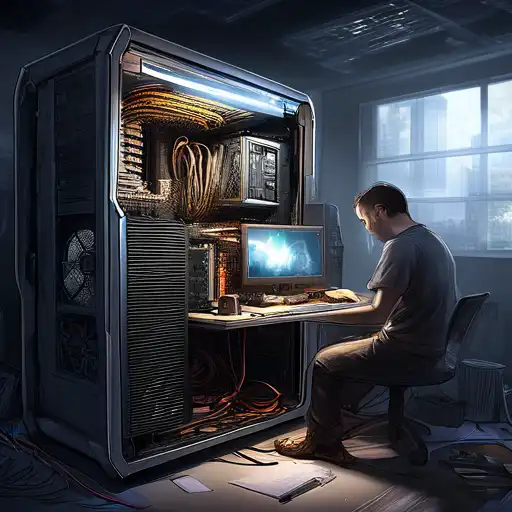Introduction to PC Building
Building your own PC can be a rewarding experience, offering both personal satisfaction and the opportunity to create a machine that perfectly fits your needs. Whether you're a gamer, a creative professional, or just someone who enjoys tinkering with technology, this guide will walk you through the basics of assembling your own computer.
Why Build Your Own PC?
There are several advantages to building your own PC, including cost savings, the ability to customize every component, and the satisfaction of creating something with your own hands. Plus, you'll gain a deeper understanding of how computers work.
Essential Components for Building a PC
Before you start, you'll need to gather all the necessary components. Here's a list of the essential parts:
- Processor (CPU)
- Motherboard
- Memory (RAM)
- Storage (SSD or HDD)
- Power Supply Unit (PSU)
- Case
- Graphics Card (GPU) - if not integrated into the CPU
- Cooling System
Step-by-Step Guide to Assembling Your PC
1. Prepare Your Workspace
Ensure you have a clean, static-free workspace. Gather all your tools and components before you begin.
2. Install the CPU
Carefully place the CPU into the motherboard's socket, following the manufacturer's instructions to avoid damage.
3. Install the RAM
Insert the RAM sticks into the appropriate slots on the motherboard. Make sure they're securely in place.
4. Mount the Motherboard
Secure the motherboard inside the case using the provided screws. Ensure it's properly aligned with the I/O shield.
5. Install the Storage and GPU
Connect your SSD or HDD to the motherboard and power supply. If you're using a dedicated GPU, insert it into the appropriate slot on the motherboard.
6. Connect the Power Supply
Attach the PSU to the motherboard, GPU, and storage devices. Make sure all connections are secure.
7. Final Checks and Boot Up
Double-check all connections, then power on your PC. If everything is connected correctly, you should see the BIOS screen.
Tips for First-Time Builders
Take your time and don't rush the process. Watch tutorial videos if you're unsure about any steps. Remember, it's okay to ask for help.
Conclusion
Building your own PC is an achievable goal for beginners, offering numerous benefits over buying a pre-built system. With the right preparation and patience, you can create a custom computer that meets all your needs.
For more information on choosing components, check out our component guide.
